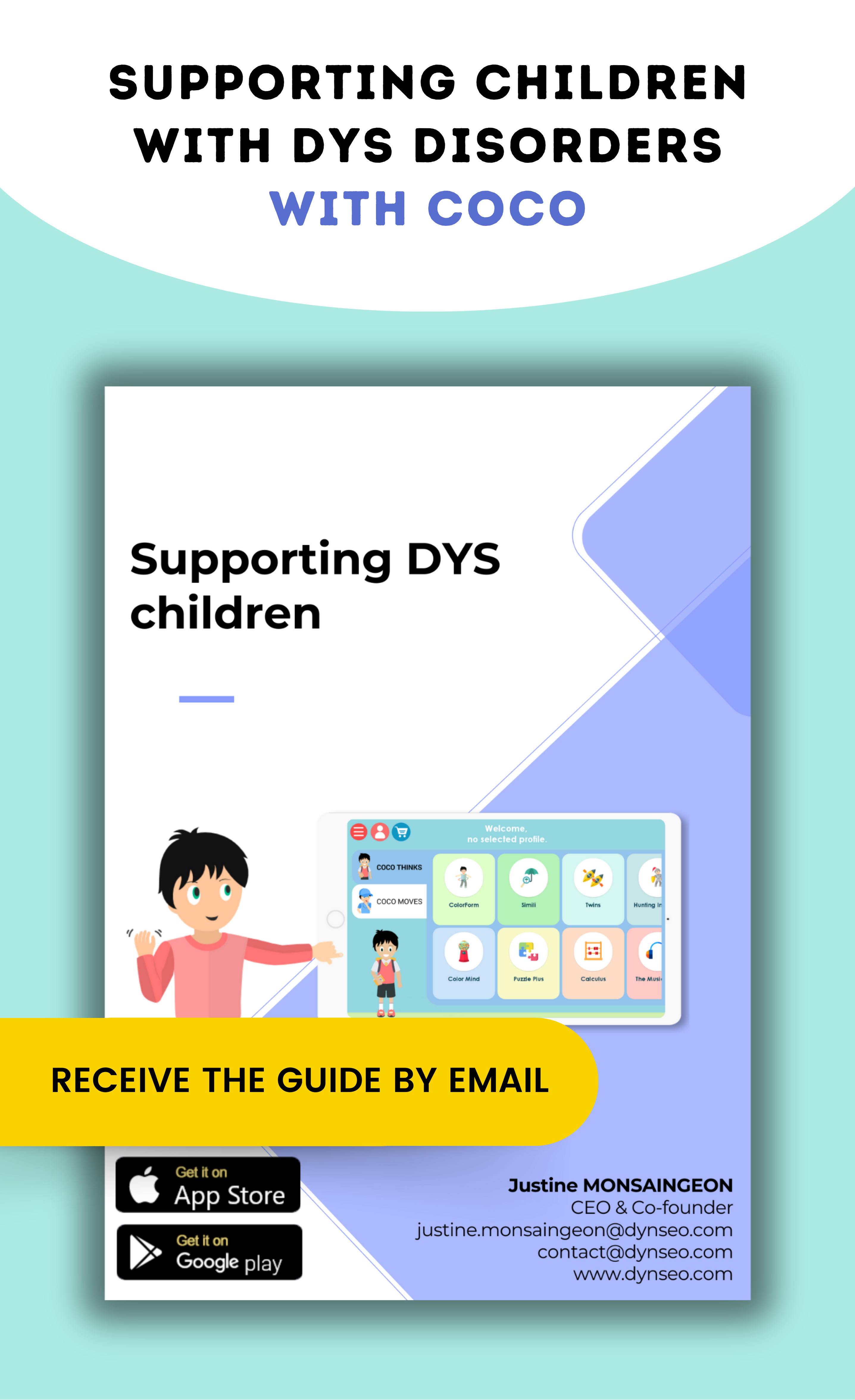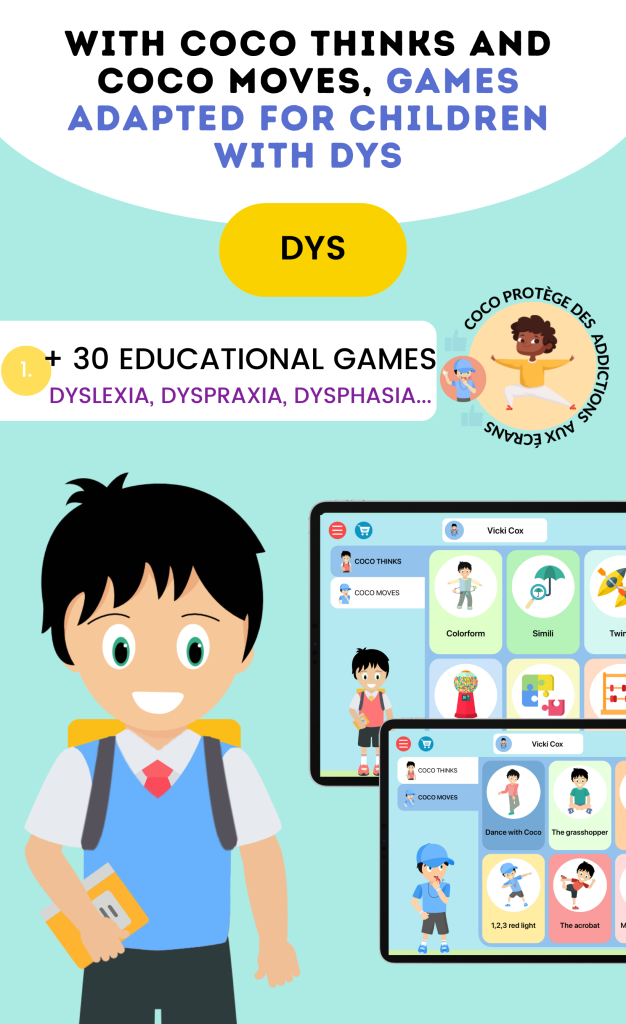Educational tablets offer a multitude of advantages for dyslexic students and those with other learning disabilities. First of all, they allow for a personalized approach to learning. Thanks to specific applications, these students can progress at their own pace, which is essential for building their self-confidence.
Indeed, the ability to review concepts multiple times without the pressure of a traditional classroom environment can significantly improve their understanding and retention of information. Moreover, educational tablets often integrate multimedia features that make learning more engaging. Dyslexic students can benefit from visual and auditory supports that facilitate content comprehension.
For example, a lesson on grammar can be accompanied by explanatory videos and interactive exercises, making learning less abstract and more concrete. This multisensory approach is particularly beneficial for students who struggle to focus on written texts.
Summary
- Educational tablets offer individualized learning tailored to the needs of dyslexic students
- Applications and tools such as spell checkers and text-to-speech are essential for dyslexic students on tablets
- Customizing accessibility settings and educational content is crucial for the use of educational tablets by dyslexic students
- The integration of educational tablets into the teaching of dyslexic students requires teacher training and adaptation of pedagogical practices
- The challenges related to the use of educational tablets for dyslexic students can be overcome with appropriate technical and pedagogical support
The Best Applications and Tools for Dyslexic Students on Tablets
There is a variety of applications and tools specifically designed to help dyslexic students overcome their difficulties. Among the most popular, we can mention “Ginger” and “Voice Dream Reader”. Ginger, for example, is a grammar checker that helps students improve their writing by suggesting corrections in real-time.
This allows them to become aware of their mistakes and learn to avoid them in the future. Voice Dream Reader, on the other hand, is a text-to-speech application that allows students to listen to texts while following them visually, which enhances their understanding. Additionally, applications like “ModMath” provide math tools tailored to the needs of dyslexic students.
This application allows users to solve math problems without having to write manually, which can be a barrier for those with motor or coordination difficulties. By using these tools, we can create an inclusive learning environment that meets the specific needs of each student.
How to Customize the Use of Educational Tablets for Dyslexic Students

Customizing the use of educational tablets is essential to maximize their effectiveness for dyslexic students. Each student has unique needs, and it is crucial to adapt the tools and applications according to these needs. For example, we can adjust the font size or color contrast to facilitate reading.
Moreover, some applications allow modifying the reading speed or adding annotations, which can help students better understand the content. It is also important to involve students in the customization process. By allowing them to choose the applications they prefer to use or giving them the opportunity to configure their interface, we promote a sense of autonomy and responsibility in their learning.
This participatory approach can enhance their motivation and engagement in educational activities.
Strategies for Integrating Educational Tablets into the Teaching of Dyslexic Students
To effectively integrate educational tablets into the teaching of dyslexic students, we must adopt a systematic and thoughtful approach. First, it is essential to train teachers in the use of these technological tools. Adequate training will allow teachers to familiarize themselves with the various applications available and understand how they can be used to meet the specific needs of their students.
Next, we must create a learning environment where the use of tablets is encouraged and valued. This may include setting up collaborative projects where students use their tablets to work together on common tasks. By integrating these tools into daily school life, we show students that technology can be a valuable ally in their educational journey.
The Challenges and Solutions Related to the Use of Educational Tablets for Dyslexic Students
Although the use of educational tablets presents many advantages, it is not without challenges. One of the main obstacles is the risk of distraction that these devices can create. Students may be tempted to use their tablets to access games or social media instead of focusing on their school tasks.
To counter this, it is crucial to establish clear rules regarding the use of tablets in class and to monitor their usage. Another challenge concerns the financial accessibility of tablets and educational applications. Not all students necessarily have access to these technologies at home, which can create inequality in learning.
To address this situation, schools can consider providing tablets to students in need or setting up loan programs. Additionally, there are many free or low-cost resources that can be used to support the learning of dyslexic students.
The Resources and Supports Available for Teachers and Dyslexic Students Using Educational Tablets

Many resources are available to help teachers and dyslexic students make the most of educational tablets. Specialized websites offer lists of recommended applications as well as guides on how to use them effectively in the classroom. For example, the “Edutopia” website offers a wealth of articles and videos on integrating technology into education, including for students with specific needs.
Furthermore, there are also online forums where teachers can exchange ideas and share their experiences regarding the use of tablets with dyslexic students. These communities can be a valuable source of inspiration and support, allowing teachers to discover new strategies and tools they might not have otherwise considered.
Testimonials and Feedback from Teachers and Dyslexic Students Using Educational Tablets
Testimonials from teachers and dyslexic students using educational tablets are often very revealing about the positive impact these tools can have on learning. Many teachers report seeing a significant improvement in their students’ engagement and motivation since the introduction of tablets in the classroom. For example, one teacher shared that her students were much more enthusiastic about learning when they could use interactive applications instead of traditional textbooks.
On the students’ side, many express a heightened sense of autonomy thanks to the use of tablets. A dyslexic student testified that he felt less stressed when he could listen to a text instead of reading it alone. This experience not only improved his understanding but also boosted his confidence in his academic abilities.
Recommendations for Effective Use of Educational Tablets in Supporting Dyslexic Students
To ensure effective use of educational tablets in supporting dyslexic students, we can follow several key recommendations. First, it is essential to establish a clear framework for the use of these tools in the classroom. This includes defining specific educational objectives as well as implementing regular assessments to measure the progress made by students.
Next, we must encourage close collaboration between teachers, parents, and specialists to create a coherent learning plan tailored to the individual needs of each student. By working together, we can ensure that all parties involved are on the same page and that students receive the support they need. Finally, it is important to stay informed about new technologies and applications that regularly emerge in the educational field.
By continuing to explore and experiment with these tools, we can constantly improve our pedagogical approach and offer dyslexic students the best chances of success possible in their educational journey.





